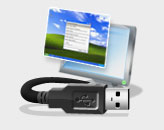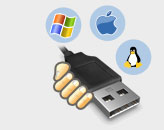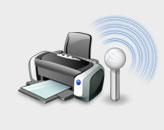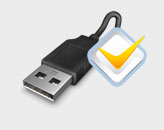Nuevas actualizaciones para los teléfonos compatibles con Lync de Polycom y HP, además de una guía de Planificación, Monitorización y Gestión de Problemas con Lync Server

Application |
Microsoft® Lync™ Phone Edition for HP 4110 and HP 4120 is the first generation of software designed specifically for the phones from HP to interoperate with Microsoft® Lync™ Server 2010. and Microsoft® Lync™ Server 2013. Lync Phone Edition provides traditional and advanced telephony…
|
FREE
|

Application |
Microsoft® Lync™ Phone Edition for Polycom® CX500, Polycom® CX600 and Polycom® CX3000 is the first generation of software designed specifically for the phones from Polycom to interoperate with Microsoft® Lync™ Server 2010 and Microsoft® Lync™ Server 2013. Lync Phone Edition provides…
|
FREE
|

Document |
Lync Server 2013 is a real-time unified communications application that relies on an optimized network infrastructure to deliver high-quality media sessions. This guide provides a model for managing the network infrastructure for Lync Server 2013—planning, monitoring, and troubleshooting.
|
FREE
|
1. Introduction. 8
1.1 Support Materials. 8
1.2 Phase Overview. 10
2. Planning. 12
2.1 Network Discovery. 13
2.1.1 Historical Metrics. 13
2.1.2 Network Impairments. 13
2.1.2.1 WAN Optimizers. 13
2.1.2.2 Virtual Private Network (VPN) 14
2.1.2.3 Firewall Policies. 15
2.1.2.4 Symmetric versus Asymmetric Links. 15
2.1.2.5 Network Topology. 15
2.1.3 Lync Devices. 17
2.1.3.1 Power over Ethernet (PoE) 17
2.1.3.2 Virtual LAN (VLAN) 17
2.1.4 Qualified Network Devices. 17
2.2 Modeling/Personas. 17
2.3 Bandwidth Estimation. 20
2.3.1 Call Flows. 20
2.3.1.1 Peer-to-Peer Session. 20
2.3.1.2 Conference Session. 20
2.3.1.3 PSTN/Mediation Server Session. 21
2.3.1.4 Content Sharing. 21
2.3.2 Bandwidth Tables. 21
2.3.2.1 Video Codec Bandwidth. 23
2.3.2.2 Video Resolution Bandwidth. 23
2.3.2.3 Impact of Multiple Video Streams in Lync Server 2013. 25
2.3.2.3.1 Lync Server Bandwidth. 25
2.3.2.4 Audio Capacity Planning for PSTN. 26
2.3.3 Bandwidth Estimation for Redundant Links. 26
2.4 Traffic Simulation. 26
2.4.1 Simulating Estimated Amount of Bandwidth Required. 27
2.4.1.1 P2P Scenarios. 27
2.4.1.2 Conferencing Scenarios. 27
2.4.2 Identifying Sites for Lync Server Traffic Simulation. 29
2.4.3 Lync Server Real-Time Scenarios to Be Simulated. 29
2.4.4 Recommended Tools for Lync Server Traffic Simulation. 29
2.4.5 Traffic Simulation Best Practices. 30
2.5 Call Admission Control (CAC) 31
2.5.1 Multiple Call Admission Control Systems. 31
2.6 Quality of Service (QoS) 32
2.7 Network Port Usage. 32
2.7.1 Manual Port Configuration Scenarios. 33
2.7.2 Quality of Service (QoS) for Modality Types. 33
2.7.3 Bandwidth Management 33
2.7.4 Internal Firewall Placement 33
2.7.5 Minimum Number of Ports for Workloads at Scale. 34
2.7.6 Configuring Manual Ports for the Lync Client 34
2.7.7 Configuring Port Ranges for Application, Conferencing, and Mediation Servers. 35
2.7.8 Configuring Dedicated Port Ranges for Edge Servers. 37
2.7.9 Verifying Manual Port Configuration – Client Side. 38
2.7.10 Verifying the UC Port Range Is Enabled for Lync Clients. 38
2.7.11 Configured UC Port Range Example (from a Sample Lync-UccApi-0.UccApilog) 38
2.7.12 Verifying Manual Port Configuration – Server Side. 39
2.7.13 Traffic Prioritization for Real-Time Communications. 39
2.8 Wi-Fi Scenarios. 40
2.8.1 Background. 40
2.8.2 What Is Wi-Fi?. 40
2.8.2.1 Wireless Standards. 41
2.8.2.2 Wi-Fi Multimedia (WMM) 41
2.8.2.3 WAP Planning. 41
2.8.3 Wi-Fi Certification for Lync Server 41
2.8.4 Wi-Fi Challenges and Recommendations. 42
2.8.4.1 WAP Configuration. 42
2.8.5 Next Steps. 42
2.8.5.1 Simple Wi-Fi Scan. 42
2.8.5.2 Spectrum Scan. 43
2.8.5.3 Wi-Fi Assessment 44
2.8.5.3.1 Preassessment Questionnaire. 44
2.8.5.3.2 Requirements. 45
2.8.5.3.3 Assessment 45
2.8.5.3.4 Presenting Results. 45
2.9 Operations. 45
2.9.1 Network Change Control Process. 45
2.9.1.1 Network Requirements. 46
2.9.1.2 Change Management Roles. 46
2.9.1.3 Change Management Process. 46
2.9.2 Network Incident Management 47
2.9.3 Real-Time Applications. 47
3. Deployment and Monitoring. 48
3.1 Elements that Require Monitoring. 48
3.1.1 Server Health. 48
3.1.1.1 Common Server Health KHIs. 49
3.1.1.2 Role-Specific Server Health KHIs. 49
3.1.2 Network Health. 50
3.1.2.1 Network Device KHIs. 50
3.1.2.2 Lync Server Call Network Metrics. 50
3.1.2.2.1 Packet Loss. 51
3.1.2.2.2 Jitter 51
3.1.2.2.3 Latency. 52
3.1.3 Client Health. 52
3.2 Configuration Audit 53
3.2.1 IP-PSTN Gateway Configuration Drift 53
3.2.2 Lync Server Configuration Drift 53
3.2.3 Network Configuration Drift 54
3.3 Usage Trend Reporting. 54
3.4 Product Features that Provide Monitoring Data. 54
3.5 Third-Party Solutions that Provide Monitoring. 55
4. Troubleshooting. 56
4.1 Troubleshooting Scenarios. 56
4.1.1 Troubleshooting a Site-Wide Issue: Lync Voice Quality – A Site Suddenly Reports Poor Audio Quality 56
4.1.1.1 Problem Report Scenario. 56
4.1.1.2 Initial Assessment 56
4.1.1.3 Data Collection. 56
4.1.1.4 Problem Isolation and Root Cause Analysis. 57
4.1.2 Troubleshooting an Individual Lync Voice Quality Issue. 57
4.1.2.1 Problem Report Scenario. 57
4.1.2.2 Initial Assessment 58
4.1.2.3 Data Collection. 59
4.1.2.4 Problem Isolation and Root Cause Analysis. 60
4.2 Troubleshooting Methodologies. 60
4.2.1 Troubleshooting a Network Segment 61
4.2.1.1 Network Router Configuration. 61
4.2.1.1.1 Quality of Service (QoS) 62
4.2.1.1.2 Rate Limiting. 63
4.2.1.1.3 Speed Sensing Mismatch (Full/Auto) 63
4.2.1.1.4 Nagle Algorithm (TCP only) 63
4.2.1.1.5 Load Balancer Configuration. 64
4.2.1.1.6 HTTP Proxies. 64
4.2.1.1.7 Bandwidth. 64
4.2.1.1.8 WAN/ISP. 65
4.2.1.2 Network Hardware Issues. 65
4.2.1.2.1 Bad Patch Cable. 65
4.2.1.2.2 Cable Loop/BPDU Guard Protection. 65
4.2.1.2.3 Router CPU Spikes. 65
4.2.1.3 Wi-Fi Quality. 65
4.2.1.3.1 Interference. 65
4.2.1.3.2 Access Point Density. 66
4.2.1.3.3 Roaming. 66
4.2.1.3.4 Wi-Fi Network Adapter and Driver 66
4.2.1.4 Other Client Network Quality Issues. 66
4.2.1.4.1 Mobile Broadband. 66
4.2.1.4.2 IPSec. 66
4.2.1.4.3 Virtual Private Network (VPN) 66
4.2.1.4.4 Forced TCP Connection. 67
4.2.1.4.5 ISP/Internet 67
4.2.1.5 Client Endpoint Performance. 67
4.2.1.5.1 Power-Saving Mode. 67
4.2.1.5.2 USB Hub/Cable. 67
4.2.1.5.3 Drivers/DPC Storm.. 67
4.2.1.6 Server Endpoint Performance. 68
4.2.1.6.1 Antivirus/Port Scanning Software. 68
4.2.1.6.2 Performance Counter Collection and Logging. 68
4.2.1.6.3 Network Adapter Configuration. 68
4.2.1.6.4 Concurrent Call Load. 69
4.2.1.6.5 Virtualization. 69
4.2.2 Troubleshooting Device Issues. 69
4.2.2.1 Built-in Sound Cards. 69
4.2.2.1.1 Microphone Boost 69
4.2.2.1.2 Digital Signal Processing (DSP) 70
4.2.2.2.3 Noise. 70
4.2.2.2 USB Devices. 71
4.2.2.2.1 USB Host Device Driver 71
4.2.2.2.2 USB Hubs and Cabling. 71
4.2.2.2.3 PC BIOS. 71
4.2.2.3 Other Device Issues. 71
4.2.2.3.1 Harmonics. 72
4.2.2.3.2 Acoustic Isolation. 72
4.2.2.3.3 Electrical Isolation. 72
4.2.3 Troubleshooting Environmental Issues. 72
4.2.3.1 Noise. 72
4.2.3.1.1 Heating, Ventilating, and Air Conditioning (HVAC) Noise. 72
4.2.3.1.2 Laptop Fan/Hard Drive. 72
4.2.3.1.3 Typing. 72
4.2.3.2 Microphone Positioning and Audio Device Selection. 73
4.2.4 Troubleshooting IP-PSTN Gateways. 73
4.2.4.1 Comfort Noise. 73
4.2.4.2. Voice Activity Detection/Silence Suppression (VAD/SS) 73
Appendix A. Lync Audio Quality Model 74
A.1 Lync Audio Pipeline. 74
A.1.1 Analog Audio Source. 75
A.1.2 Analog Audio Capture. 75
A.1.3 Analog-to-Digital Conversion (ADC) 75
A.1.4 Digital Signal Packet Capture. 76
A.1.5 Digital Signal Preprocessing (DSP) 76
A.1.6 Encoding. 76
A.1.7 Encryption. 77
A.1.8 Protocol Encapsulation. 77
A.1.9 Transmission. 77
A.1.9.1 Jitter 77
A.1.9.2 Loss. 78
A.1.9.3 Delay. 78
A.1.10 Reception. 78
A.1.11 Decryption. 78
A.1.12 Decoding. 78
A.1.13 Reassembly, Buffering, and Healing. 79
A.1.15 Post processing. 79
A.1.16 Playback. 79
A.1.17 Digital-to-Analog Conversion (DAC) 79
A.1.18 Analog Audio Render 79
Appendix B. Lync Server QoE Reporting. 80
B.1 Lync 2010 QoE Database Schema. 80
B.2 QoE Table Join View Example. 81
B.3 QoE Metrics Review. 82
B.3.1 End-to-End Metrics. 82
B.3.2 Endpoint Metrics. 83
B.3.3 Configuration Parameters. 83
B.3.3.1 UserAgent Field. 83
B.3.4 Event Ratios. 83
B.4 Managing Lync Server Quality. 83
B.4.1 Corporate Average Audio Quality. 83
B.4.2 ClassifiedPoorCall 83
B.4.3 Media Quality Summary Report 84
B.4.4 Managed versus Unmanaged Infrastructure Reporting. 87
B.5 Server-Server Reports. 88
B.5.1 AV MCU. 88
B.5.2 Mediation Server 88
B.5.3 IP-PSTN Gateway. 88
B.5.4 AV MCU-Mediation Server Report Example. 88
B.5.4.1 Temporary Views. 91
B.5.4.2 Counting Poor Calls. 91
B.5.4.3 Caller/Callee Handling. 91
B.5.5 Mediation Server-IP PSTN Gateway Report Example. 91
B.6 Subnet Reports. 93
B.6.1 Wired Subnet Report Example. 94
B.6.2 Wireless Subnet Report Example. 96
B.7 Linking to External Data Sources. 96
B.8 Trending and Data Retention. 97
B.9 Using User Experience Metrics. 97
B.9.1 Mean Opinion Score (MOS) 100
B.9.2 Network MOS (NMOS) versus NMOS Degradation. 101
B.10 Other Reporting Examples. 101
B.10.1 Device Queries. 101
Appendix C. Call Quality Methodology – a practical approach. 105
C.1 Approach and Concepts. 105
C.1.1 Server Plant 108
C.1.2 Endpoints. 109
C.1.3 Last Mile. 110
C.1.4 Service Management 111
C.2 Server Plant Breakdown. 112
C.2.1 Server Health. 112
C.2.1.1 Assert Quality. 112
C.2.1.2 Achieve Quality. 112
C.2.1.3 Maintain Quality. 113
C.2.2 Server-to-server reports: AV MCU to Mediation Server and Mediation Server to Gateway. 113
C.2.2.1 Assert Quality. 114
C.2.2.2 Achieve Quality. 114
C.2.2.3 Maintain Quality. 114
C.2.3 IP-PSTN Gateway Health. 114
C.2.3.1 Assert Quality. 115
C.2.3.2 Achieve Quality. 115
C.2.3.3 Maintain Quality. 115
C.3 Endpoints Breakdown. 115
C.3.1 Device. 115
C.3.1.1 Assert Quality. 116
C.3.1.2 Achieve Quality. 116
C.3.1.3 Maintain Quality. 116
C.3.2 System.. 116
C.3.2.1 Assert Quality. 117
C.3.2.2 Achieve Quality. 117
C.3.2.3 Maintain Quality. 118
C.3.3 Media Path – VPN & Relay. 118
C.3.3.1 Assert Quality. 119
C.3.3.2 Achieve Quality. 119
C.3.3.3. Maintain Quality. 119
C.3.4 Media Path – Transport 119
C.3.4.1 Assert Quality. 120
C.3.4.2 Achieve Quality. 120
C.3.4.3 Maintain Quality. 120
C.4 Last Mile Breakdown. 120
C.4.1. Wired. 121
C.4.1.1 Assert Quality. 121
C.4.1.2 Achieve Quality. 121
C.4.1.3 Maintain Quality. 121
C.4.2 Wireless. 121
C.4.2.1 Assert Quality. 122
C.4.2.2 Achieve Quality. 122
C.4.2.3 Maintain Quality. 122
C.5 CQM Dashboard. 122
C.6 Summary. 125
Appendix D. Troubleshooting Poor Streams. 127
D.1 RTP and RTCP (Packet Loss Troubleshooter) 127
D.1.1 RTP. 127
D.1.2 RTCP. 128
D.1.3 Receiver Report and Sender Report header structure. 128
D.3 Example Scenario – Investigate Packet Loss reported between Mediation Server and Gateway. 131
Appendix E. Troubleshooting Duplex and Speed Sensing Mismatch (Full/Auto) 136
Appendix F. Tools. 137
F.1 Collect Logs. 137
F.2 Debugging Tools for Windows. 137
F.3 err.exe. 137
F.4 Error String Display (CSError.exe) 137
F.5 Microsoft Exchange Troubleshooting Assistant 138
F.6 Log Parser 139
F.7 Lync Best Practices Analyzer 139
F.8 Lync Client Logging. 139
F.9 Lync Server 2010 Logging Tool 139
F.10 Microsoft Product Support (MPS) Reports. 140
F.11 Network Monitor 141
F.12 Network Monitor Parsers. 141
F.13 OCStracer.exe. 141
F.14 PortQryUI 142
F.15 ProcDump. 142
F.16 Process Explorer 142
F.17 Process Monitor 142
F.18 Remote Connectivity Analyzer 142
F.19 Snooper 142
F.20 TextAnalysisTool.NET. 143
F.21 Unified Messaging Diagnostics Logging. 143
F.22 XMLNotePad. 144
Ahora toca leer y actualizar!!!







































